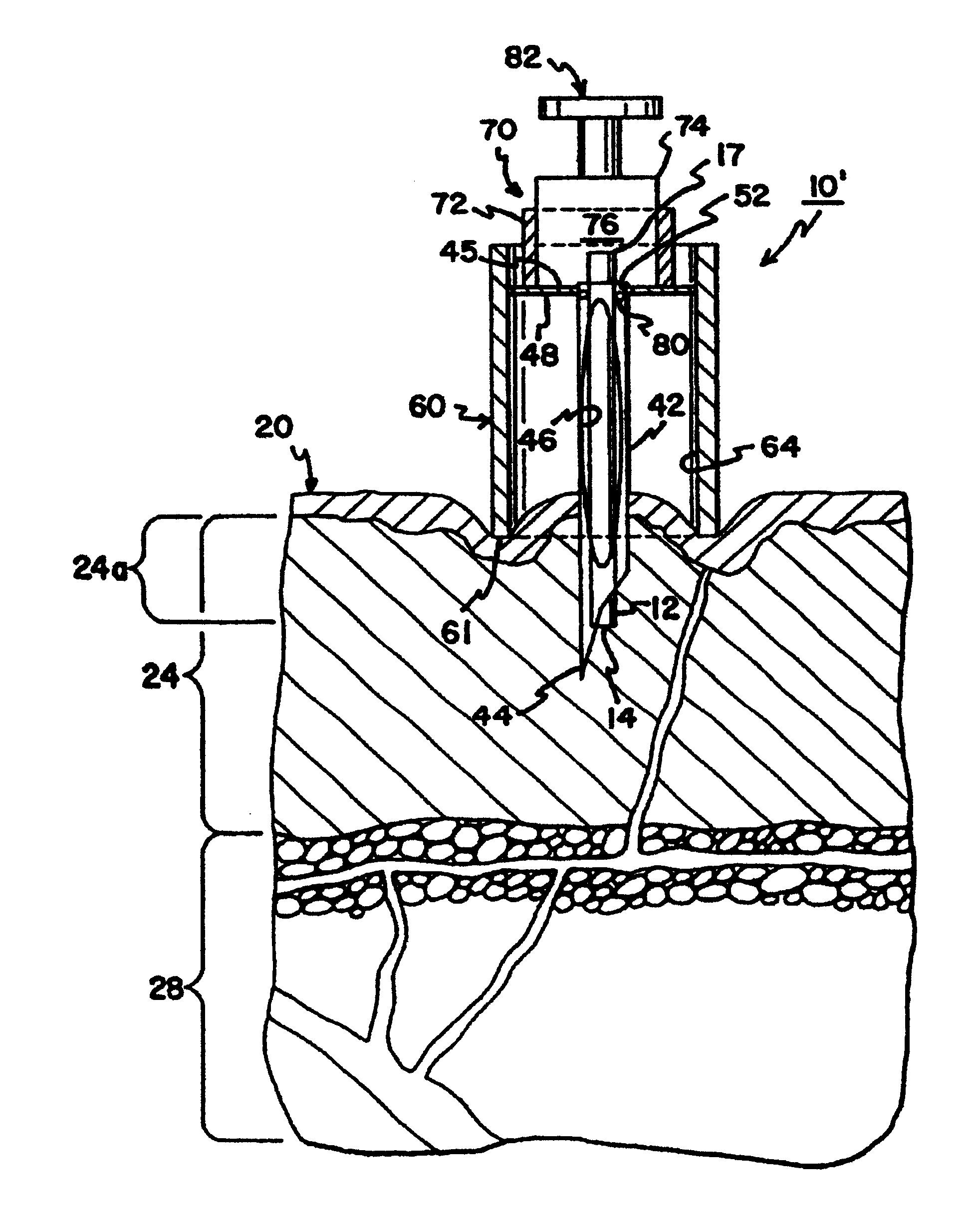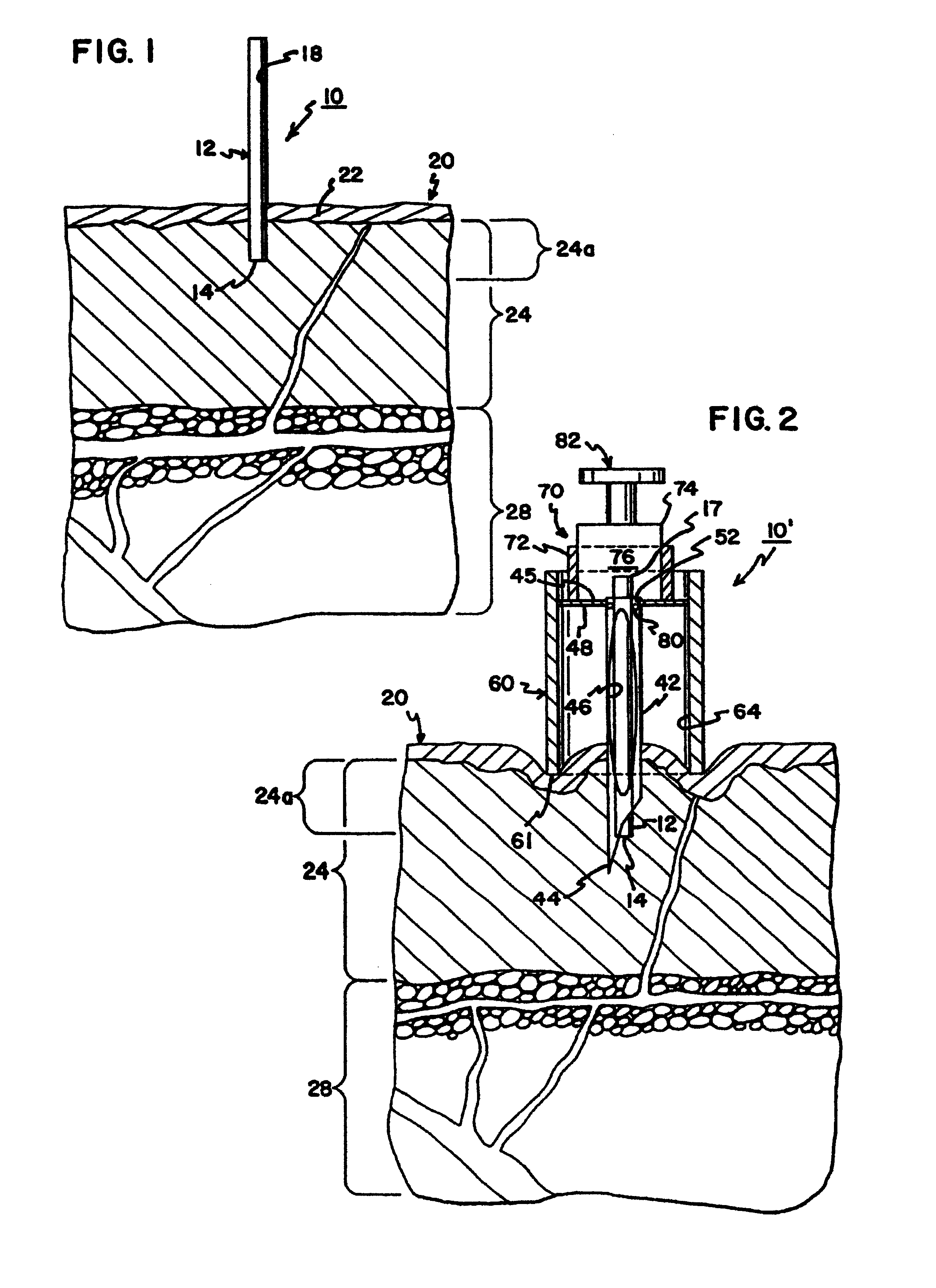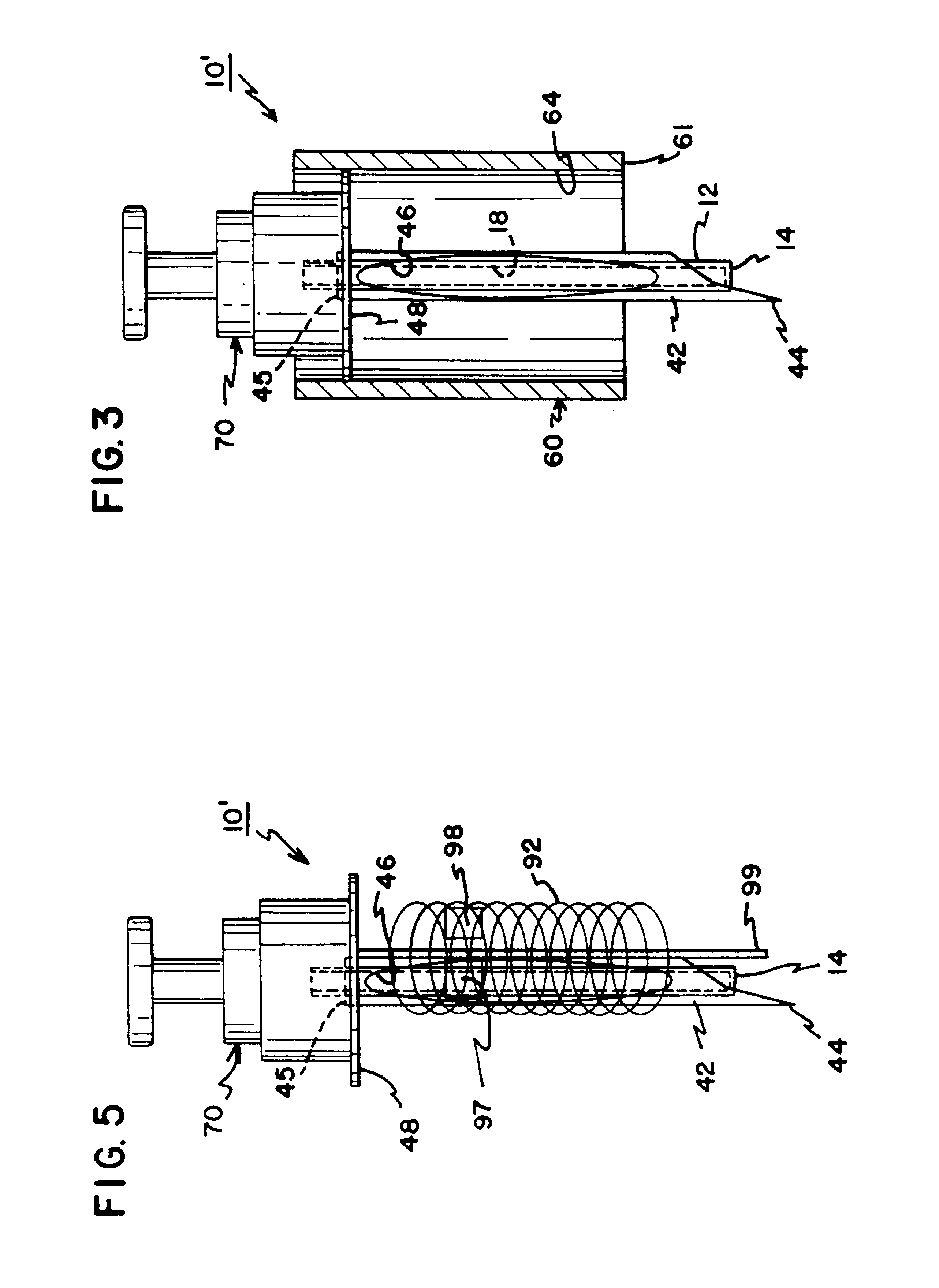Interstitial fluid collection and constituent measurement
a technology of interstitial fluid and constituent measurement, which is applied in the field of apparatus for collecting body fluid for testing, can solve the problems of hematoma and other bleeding complications, invasive blood glucose and other bodily analyte measurements, and inability to accurately measure blood glucose and other bodily analyte,
- Summary
- Abstract
- Description
- Claims
- Application Information
AI Technical Summary
Problems solved by technology
Method used
Image
Examples
Embodiment Construction
A. Fluid Sampling Generally
Referring now to FIG. 1, an apparatus 10 is shown for use in minimally-invasive testing for a body fluid constituent. While the illustrated application is a preferred embodiment, it will be appreciated that the salient features are applicable to a wide variety of body constituents found in body fluid.
In FIG. 1, the apparatus 10 according to the present invention is shown in its most elementary structure for ease of illustration. The apparatus 10 is for collecting a sample of fluid.
The apparatus 10 includes a penetration member in the form of a conduit 12, preferably a hollow capillary type tube, which is open at both ends and which is inserted into a layer of skin 20. As shown in FIG. 1, the structure of the skin 20 includes three distinct layers, the epidermis 22, which is the top thin layer, the dermis 24, or middle layer, and the subcutaneous layer 28. Commonly, the epidermis is about 100 microns thick, the dermis 24 is about 2,000-3,000 microns thick.
T...
PUM
 Login to View More
Login to View More Abstract
Description
Claims
Application Information
 Login to View More
Login to View More - R&D
- Intellectual Property
- Life Sciences
- Materials
- Tech Scout
- Unparalleled Data Quality
- Higher Quality Content
- 60% Fewer Hallucinations
Browse by: Latest US Patents, China's latest patents, Technical Efficacy Thesaurus, Application Domain, Technology Topic, Popular Technical Reports.
© 2025 PatSnap. All rights reserved.Legal|Privacy policy|Modern Slavery Act Transparency Statement|Sitemap|About US| Contact US: help@patsnap.com



